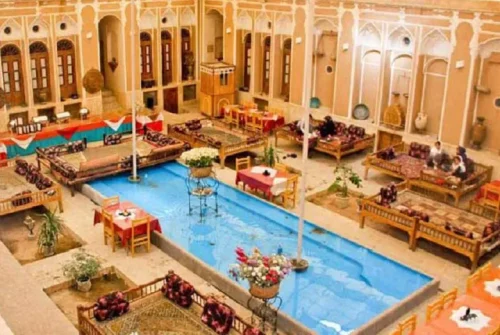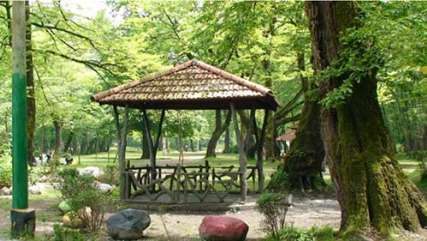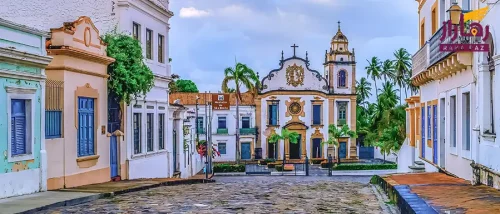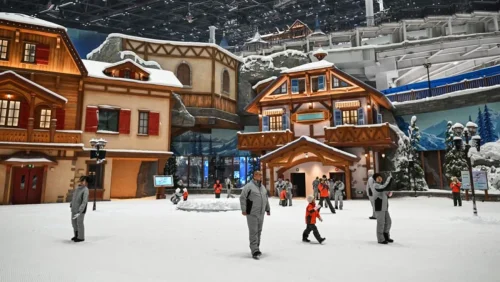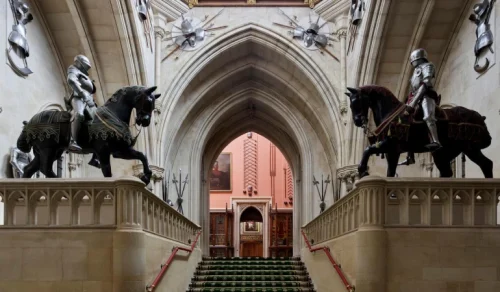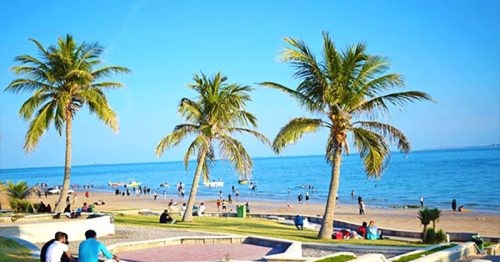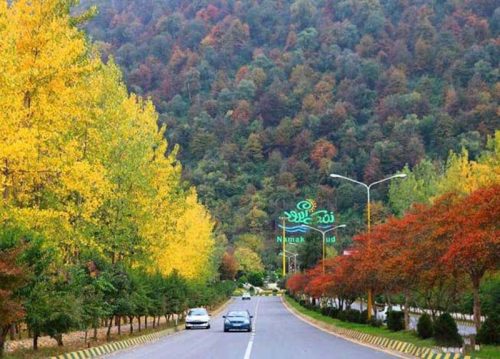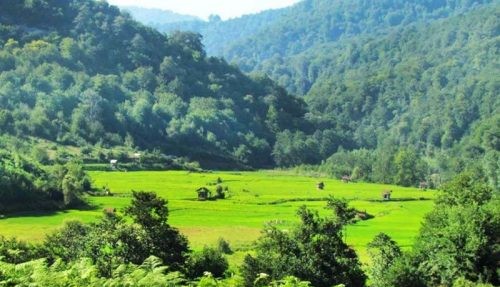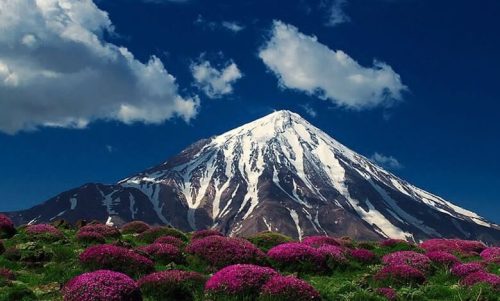The Green Palace: A Symbol of Iranian Architecture in the Heart of Sa’dabad, Tehran
The Green Palace is one of the most prominent jewels of Iranian architecture located in the heart of Sa’dabad, Tehran. With its unique design, this palace is not only a symbol of Iranian art and culture but also a testament to the rich history that Iran Charter proudly presents to the world. Visiting the architecture of the Green Palace in Sa’dabad can provide an unforgettable experience for those interested in history and architecture.
Besides the interior beauty, the Green Palace in Tehran, a jewel of Iranian architecture has also become a perfect spot for both domestic and international tourists. Iran Charter offers special tours, providing you with a comprehensive understanding of the history and architecture of the Green Palace and allowing you to enjoy its attractions.
For those interested in discovering more about the architectural wonders of the Green Palace in Sa’dabad, Iran Charter offers a wide range of services. These include expert guidance, exclusive tours, and full information on visiting hours and facilities of the Green Palace. By choosing Iran Charter, you will have an unparalleled experience of visiting this unique historical monument.
For more information about Iran Charter tours and services, please call 02191091190 or send an email to info@irancharter.ir.
History of the Green Palace: A Beginning of Iranian Architecture in the Heart of Saadabad, Tehran
The Green Palace, a prominent symbol of Iranian architecture in the heart of Saadabad, Tehran, has a rich and extended history. This palace was built in the late 19th century by the order of Mirza Reza Kolahdooz, the founder of the Qajar dynasty. The unique design of the Green Palace, combining traditional and modern Iranian elements, represented an effort to preserve Iranian cultural identity during times of social and political changes. Built with quality materials and meticulous attention, the architecture of the Green Palace has become one of Tehran’s most important historical attractions.
Architectural Features of the Green Palace: A Fusion of Art and Culture in Iranian Architecture
Due to its specific architectural features, the Green Palace is recognized as one of the prominent symbols of Iranian architecture. With its green towers and sharp-edged pinnacles, it provides a stunning view over the Saadabad area. The use of traditional Iranian tiles, floral decorations, and colorful glass windows showcases the beauty and authenticity of the architecture. Additionally, the interior spaces of the palace, with inner courtyards and beautiful gardens, display a harmony of art and nature that captivates its visitors.
The Green Palace in Iranian Cinema: A Showcase of History and Culture
The Green Palace, as one of Tehran’s historical symbols, has inspired numerous Iranian films and cinematic works. With its open spaces and unique architecture, it has provided an apt background for filming historical and cultural scenes. The presence of the Green Palace in various films beautifully and realistically depicts stories of Iran’s history and culture, helping audiences gain a deeper understanding of Iran’s past.
Visiting the Green Palace: A Cultural Experience in the Heart of Tehran
Visiting the Green Palace offers tourists a unique experience of Iranian culture and history. With its art galleries, museums, and diverse exhibitions, the palace provides an excellent opportunity to get acquainted with Iranian art and culture. Additionally, its open spaces with beautiful gardens and seating areas offer a pleasant environment for leisure and photography. For lovers of history and architecture, visiting the Green Palace is an unforgettable experience.
Map of the Green Palace: Its Various and Attractive Sections
The map of the Green Palace includes various sections, each with its own attractions. These include grand halls, historical libraries, art museums, and beautiful gardens. Each of these sections, designed with care and quality materials, provides an appropriate space to display Iranian art and culture. Visitors can explore these sections to become closely acquainted with Iran’s history and art and to enjoy the architectural beauty of the Green Palace.
Art and Museum in the Green Palace: A Treasure Trove of Historical and Artistic Works
The Green Palace hosts a collection of artistic and historical museums that showcase valuable Iranian works. These museums include traditional paintings, pottery, metalworks, and historical artifacts, each telling a story of Iran’s history and culture. Additionally, temporary exhibitions of contemporary artists at the Green Palace demonstrate the diversity and dynamism of Iranian art to its visitors. These artistic collections have turned the Green Palace into a cultural center that attracts art enthusiasts and history lovers.
Festivals and Events at the Green Palace: A Point of Interest for Domestic and International Tourists
With its diverse festivals and events, the Green Palace has become one of the popular destinations for both domestic and international tourists. From music and visual arts festivals to historical and cultural exhibitions, the palace offers a lively and dynamic environment for holding various events. These festivals not only promote Iranian art and culture but also provide an excellent opportunity for cultural exchange and knowledge sharing among artists and visitors.
Comparison of the Green Palace with Other Iranian Architectural Works: Advantages and Differences
The Green Palace is one of the most prominent Iranian architectural works, but when compared with other palaces and historical buildings in Iran, it has its own distinctive features and advantages. While the Golestan Palace is also known for its rich history and splendid architecture, the Green Palace, with its green design and expansive open space, offers a different experience. These differences have made both palaces symbols of Iranian art and architecture, holding a special place in the heart of Iran’s history and culture.
How to Get to the Green Palace: A Guide for Domestic and International Tourists
Getting to the Green Palace in the heart of Saadabad, Tehran, is very easy for both domestic and international tourists. The palace can be easily accessed via public transport such as the metro and buses. Additionally, clear signage and directions around the Green Palace assist visitors in reaching their destination quickly and without hassle. For those preferring taxis or personal vehicles, well-marked routes and parking facilities are also available around this historical site.
The Importance of the Green Palace in Preserving Iran’s Cultural Identity
The Green Palace, with its prominent role in preserving and promoting Iran’s cultural identity, is recognized as a significant cultural symbol. By showcasing Iranian arts and handicrafts, the palace plays an important role in introducing Iran’s culture to the world. Additionally, holding cultural events and festivals at the Green Palace provides an excellent opportunity for preserving and developing Iranian culture. These efforts not only strengthen Iran’s national identity but also emphasize the importance of preserving cultural heritage for future generations.
Impact of the Green Palace on Cultural Tourism in Tehran
As one of Tehran’s cultural tourism attractions, the Green Palace plays an important role in attracting both domestic and international tourists. With its beautiful architecture and rich history, the palace is an intriguing destination for those interested in Iranian history and culture. The increase in visitors to the Green Palace has helped develop Tehran’s cultural tourism industry and improve the standards of tourism services in the city. Additionally, international collaborations in cultural and tourism fields at the Green Palace strengthen its role as a cultural bridge between Iran and other countries.
Frequently Asked Questions
- Where is the Green Palace located?
- The Green Palace is located in the Saadabad Palace complex in northern Tehran.
- When was the Green Palace built?
- The Green Palace was founded in 1932 and completed in 1936.
- For whom was the Green Palace built?
- The Green Palace was built for Fatemeh Pahlavi, the spouse of Mohammad Reza Pahlavi.
- What architectural style is the Green Palace built in?
- The Green Palace is built in the Iranian architectural style, combining both traditional and modern architecture.
- What are the architectural features of the Green Palace?
- The architectural features of the Green Palace include the use of natural materials such as wood, stone, brick, and tiles. It also integrates traditional Iranian architectural elements such as central courtyards, iwans, and domes.
- What is the current use of the Green Palace?
- Today, the Green Palace is used as one of the museums in the Saadabad Palace complex.
- What does the Green Palace currently display?
- The Green Palace displays items such as Fatemeh Pahlavi’s personal belongings, photographs, artworks, and more.

